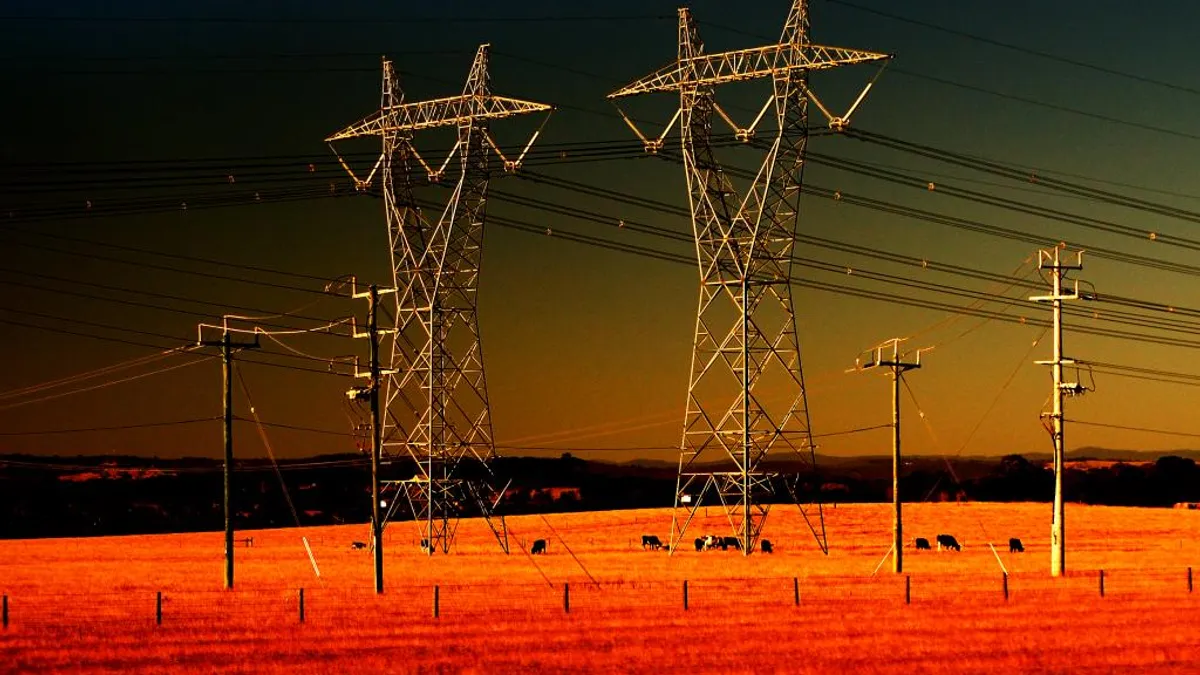The following is a contributed article by Paul Zummo, Director of Policy Research and Analysis at the American Public Power Association.
Across the U.S., 16 states and the District of Columbia have deregulated their retail electricity markets. This means they allow end-use customers to choose their electricity provider and don't have rate caps or other forms of regulatory protections that limit customers' exposure to wholesale market prices.
Has the deregulation of electricity markets yielded significant benefits for customers in these states, which include California, Connecticut, Delaware, Illinois, Massachusetts, Maryland, Maine, Michigan, Montana, New Hampshire, New Jersey, New York, Ohio, Pennsylvania, Rhode Island and Texas.
There is no clear evidence that it has. In fact, in some instances, deregulation may have caused more harm than good.
Rate results
The American Public Power Association's annual review of retail rates in deregulated and regulated states (see 2018 data) shows that average total rates in regulated states have increased by almost the exact same amount as in deregulated states since 1997. Rates for commercial and industrial customers in deregulated states have not risen as sharply as they have for those in regulated states. Residential rates have increased by about half a cent more in deregulated states overall than they have in regulated states.
On the other hand, the public power model — based on local ownership and control — has not incorporated retail choice, but has demonstrated stable benefits over decades. Not-for-profit public power utilities have been able to procure and sell electricity at the lowest cost while meeting environmental, reliability and other important goals.
Findings in the APPA's review of retail rates in deregulated and regulated states may differ from those of other studies and articles for a few different reasons.
First, our list includes California as a deregulated state, while others may regard it as a regulated state. While California suspended its retail choice program in the aftermath of the 2000-2001 energy crisis, after 2009, it permitted retail choice for commercial and industrial customers, subject to a cap that has ranged from 9% to 17% of the investor-owned utility load, according to the California Public Utilities Commission.
California's average retail rate in 2018 was 16.7 cents per kilowatt-hour, as compared to a national average of 10.6 cents, and almost double the state's total average rates two decades ago. So how this state is categorized has a significant impact on rate analyses.
Second, the APPA report uses 1997 as the starting point for comparisons. This year marked the beginning of the transition to retail competition for most states. A slightly later start — for example, 2000 — would yield similar results. In fact, rates in deregulated states were a tenth of a cent less in 2000 than they had been in 1997, and a tenth of a cent more in regulated states.
Other studies have selected different starting periods. For example, if you chose 2008 as the starting point, you would find that total rates in regulated states have increased by 1.3 cents, as compared to a more modest 0.2 cent increase in deregulated states. But this was the year immediately before natural gas prices began to precipitously decline, producing a decline in electric rates in deregulated states, especially in Texas, which dramatically pulled the weighted average down for all the deregulated states.
Between 2008 and 2012, the weighted average rates in the deregulated states declined by 0.7 cent, compared to a 0.6 cent increase in regulated states. But since that time, rates have increased by a higher rate again in the deregulated states, from 11 cents to 11.9 cents, versus 8.9 to 9.6 cents for regulated states. Thus, the starting point of these studies is another element to carefully consider when weighing their relative merits.
One other important aspect of APPA's report is that we look at increases in average nominal rates. Since the regulated states began the study period with much lower rates — 5.8 cents versus 8.1 cents in deregulated states — the percentage increase for the regulated states is higher than for the deregulated states, even though the nominal difference is essentially the same in 2018 (9.6 cents for regulated versus 11.9 cents for deregulated). The lower starting point means rates have increased by 64.4% in regulated states, as compared to a 47.1% in deregulated states.
Using a percentage increase instead of a nominal increase makes the changes in deregulated states look a bit more favorable, though not by a wide margin. The percentage increase in residential rates in regulated states is smaller than it was for total rates (61.1%) and a little less for deregulated states as well (46.5%). Whether using nominal or percentage increase, it is difficult to argue that retail choice has materially benefited customers in deregulated states as compared to regulated states.
Retail choice restrictions
Officials in several states, including Massachusetts, Connecticut and New York, have called for restrictions or an end to residential retail choice, citing evidence of electric cost increases, especially for low-income consumers.
Has retail choice encouraged "green power" purchases? The data do not reveal any notable difference in renewable energy generation in deregulated and regulated states. Significant growth has occurred in both state groups. Nearly all renewable generation capacity, even in deregulated states, has been brought to market under long-term contracts, not short-term retail choice sales.
One proven mechanism for providing customers, especially residential customers, with benefits from retail choice is through community choice aggregators (CCA), where a county or municipality purchases power on behalf of all the citizens, subject to opt-in or opt-out provisions. CCAs are available in some, but not all, retail choice states. These entities can arrange long-term purchases on behalf of their customers for specific resources, such as renewable power, and have generally produced cost savings for the community. In California, for example, CCAs now provide approximately half the energy within the Pacific Gas & Electric service territory.
Deregulation by itself has not lived up to the hype in terms of rate relief. Nor has it incentivized increased use of renewables. Local solutions should be the preferred option to keep costs down while protecting the environment.






















